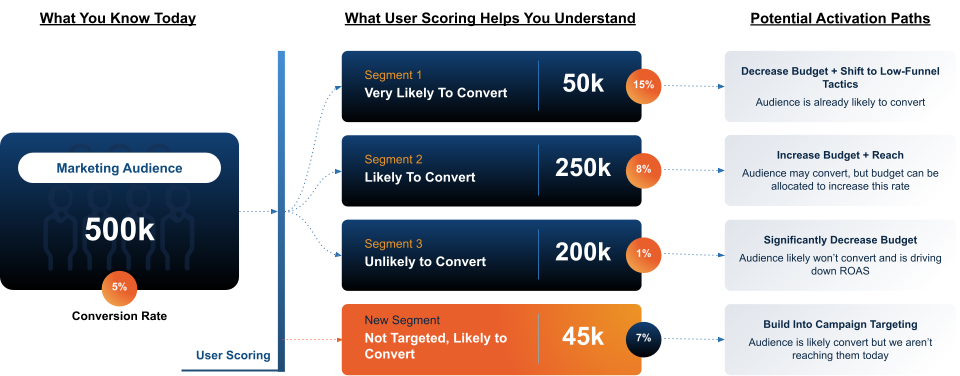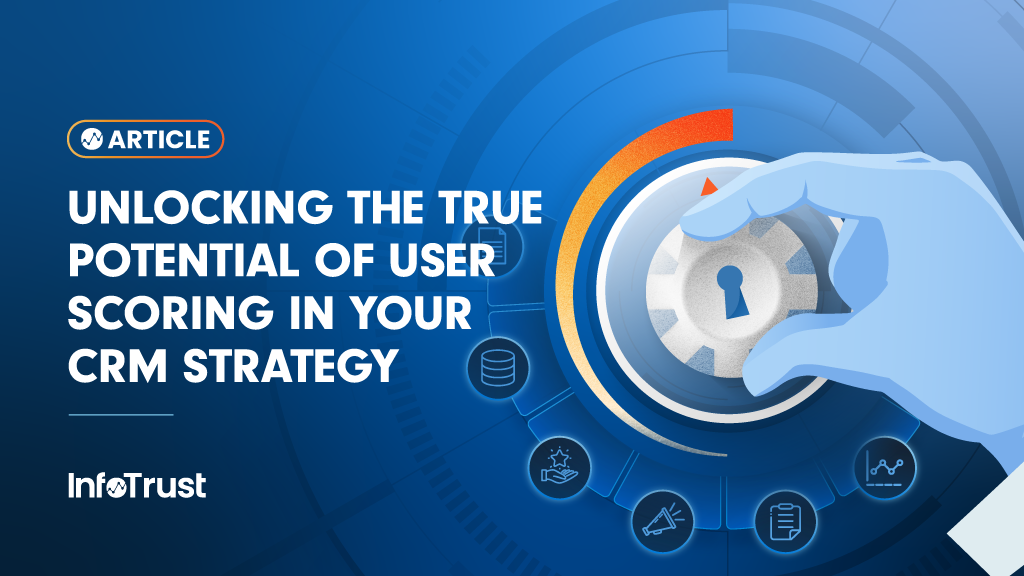Most marketers are underutilizing user scoring models in their CRM strategies.
Talk to most CRM marketers and they will view user scoring as an imperfect, directional tool to determine the priority to place on an individual lead. Their scoring model(s) may help justify a lead being ‘ready’ to talk to sales, be included in a campaign’s audience, or show how well marketing is doing at driving engagement.
Given the traditional approaches to determining these ‘scores’ it is easy to see why this mindset persists. They are often based on a collection of demographic attributes and site behavior that are loosely correlated with “example” buying paths pieced together using marketing and analytics tools. These models are “refined” over time using inherently biased feedback related to low lead-to-close rates, or worse, comments like, “this lead isn’t qualified, I’m not calling them.”
It doesn’t have to be this way. Even in today’s reality of increased regulatory-driven restrictions and the limitations of third-party cookies, marketers have access to data that can help them understand their customer like never before.
A Smarter Approach to User Scoring
First-party data is the way of the future for marketing. The days of the brands with the biggest budgets being able to win without a solid marketing foundation are quickly dwindling; instead, those who can wrangle, centralize, and activate their data most effectively will become the leaders.
Instead of relying on marketing-first tools and black-box scoring models, marketers should embrace the MDW and the benefits that come with having connected data. By leveraging a wider array of data, scoring models can be built on propensity models to provide more accurate and data-driven predictions. This broader dataset, combined with AI-enabled workflows (such as those from Vertex AI) allows for greater efficiency in building, deploying, running, and optimizing models, which only increases effectiveness overtime.
Scoring for Use Beyond Prioritization
The same scoring model can be used to inform many marketing efforts, from tactics to targeting to prioritization. Different models can be deployed to answer different questions related to the same audience.
Let’s explore some potential paths with a hypothetical business that sells all-inclusive travel packages with the opportunity to “add-on” experience post-purchase.
Pre-Purchase: Propensity to Purchase First Package
Based on demographic attributes such as metro-area, behavioral signals such as inquiry path, and other signals, a score will be determined on how likely this new lead is to purchase. This can be used in both messaging and targeting, while also helping to determine a sales agent’s prioritization for calling.

For example, user scores can help determine leads who are:
- Very likely to purchase – Counterintuitively, you may choose to not invest resources in converting these leads because they are likely to do so on their own.
- Likely to purchase – These leads may sit on the fence and need a slight push to purchase. High-margin time-based incentives may be a good fit as they provide a reason to buy without sacrificing your margin.
- Unlikely to purchase – Extra convincing will be needed to get these leads to purchase. They may need more attention from sales agents and more incentive to be convinced.
- Very unlikely to purchase – It’s likely not worth investing resources in this group. You may exclude them from advertising audiences so as not to waste budget.
This model could be paired with a predictive LTV model in order to further refine prioritization and potential ROI to determine resource and budget allocation.
Post-Purchase: Propensity to Add a Moped Rental vs Wine Tasting vs Castle Tour
After a guest books their package, we want to help them get the most out of their experience. In the past we’ve used light segmentation to refine offers; however, we’ve now deployed scoring models that determine what add-ons each individual guest is most likely to be interested in.
Based on this knowledge, we can:
- Align creative to the offer that is most likely to resonate with each guest
- Target those who are likely to purchase in media efforts, while leveraging mostly-owned channels on those who are unlikely to add a package.
Where to Go from Here
User scoring can be a powerful tool to better meet the expectations of your audience, be more effective with budget allocation, and improve marketing effectiveness. Marketers should begin by evaluating where user scoring can most effectively enhance your marketing strategy, focusing on areas like lead prioritization, targeting, creative, and messaging. These use cases should focus on the audience’s likelihood to do something. This is often a purchase or significant conversion (i.e. book an appointment).
From there, consider the signals and inputs that would be important in determining the likelihood that that something would be done and develop a plan to bring that data together in a central spot. From there you can begin down the path of data-driven scoring models, ensuring, of course, to continuously refine them based on new data and feedback to improve accuracy and effectiveness.


